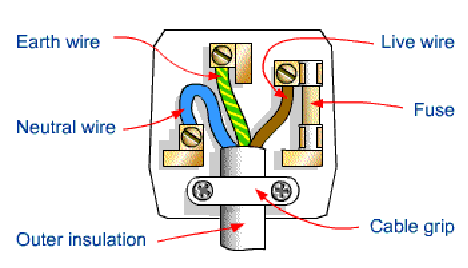
If the current gets too large, indicating a device error or short circuit, a large current will flow in the fuse, which will heat up and melt, breaking the circuit. No current will then flow and the device will be OFF!. Before replacing the fuse, the cause of the excess current should be found and corrected.
The yellow/green striped earth wire is the earth wire, and is only needed when a device has a metal case - common with washing machines and fridges. If a loose wire inside the device touches the case, the case may become live and electrocute anyone that touches it. To prevent this, the case is connected to the earth wire, ensuring a complete circuit if if the live wire touches the case. A large current will flow, heating and melting the fuse and causing the device to go dead.
Fuses come in various ratings – 3A, 5A or 13A. Each rating is designed to allow enough current to reach a device to allow it to operate normally, and melt if the current becomes large before the device is damaged. The fuse rating is found by finding the current required by the device and rounding up to a fuse rating.
Suppose that a device has a power rating of 600W. We can find the current requirement using the equation
We would use a 3A fuse.
